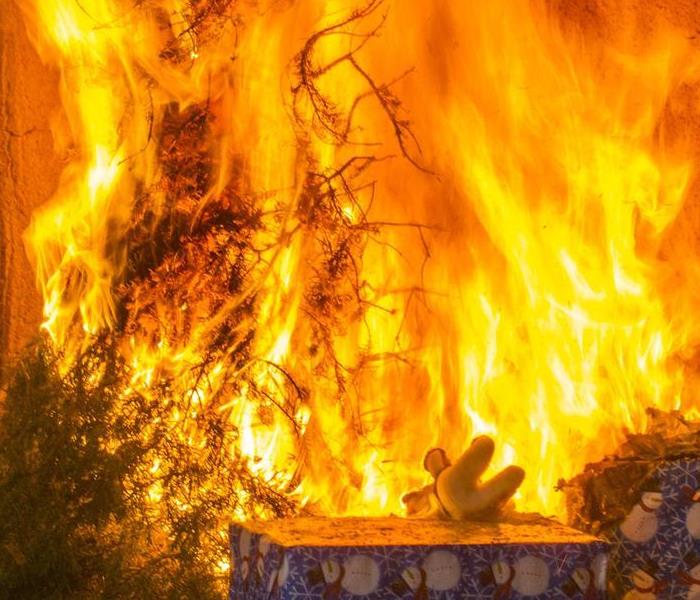The Battleground for Christmas
12/16/2015 (Permalink)
In the early 1900's, insurance companies wanted to stifle the Christmas season. That's not much of an exaggeration, but they had good intentions.
In the middle of the 1600's people started lighting up their Christmas trees. Of course no one had our modern electric lights then, so they would place candles, held by wax, on the end of the branches. They learned very early on this was extremely dangerous, but electric strands weren't to be invented until the late 19th century.
In 1882, an associate of Thomas Edison hand wired a strand of 80 red, white and blue lights for his personal Christmas tree. He placed his tree in his New York apartment window for all to see. The demand for these stringed lights went up and they were being mass produced in 1890. Let me clarify though, the demand went up among the extremely wealthy of the time. One strand of lights cost $300 in today's currency, including the fee for the electrician that had to install them. Since the price was so high people were still using candles well into the 20th century.
Unsurprisingly, candle-lit trees brought grief to insurance companies who increasingly had to deal with the claims relating to the tree fires. So many disastrous fires occured, newspapers would report the season's first fire as casually as the first snow fall. And the damage didn't discriminate against people. One unlucky Santa Clause caught fire while reaching to grab a present under the tree at a department store. He was burned, but lucky.
In 1908, a group of insurance companies collectively refused to pay for fires started by Christmas trees with candles. They adopted a clause of "knowing risks" in their policies. This clause was inserted mainly because a fire was practically inevitable when lit candles were placed on dry trees. This meant that department store windows illuminating with Christmas joy was banned. Church sanctuaries swelling with pines and firs were banned. Halls decked with boughs of holly were forbidden--as long as they wanted to keep their insurance policy.
Electric lights offered an alternative. However, they weren't much more reliable for safety. The next year the insurance underwriters added 'electric lights' to their list of banned decorations. Not until the 1920's were safer lights available. However Christmas tree fires were still common. In 1943, Bing Crosby's mansion was engulfed in flames after his Christmas tree lights short circuted. Most of his loss was covered by insurance though, as they had started to relent.
Still today we have fires starting from our strands of lights. While hanging them up it's important to remember the following:
- Electricity can and will travel through you to get to its home, which is the ground.
- If you discover a loose wire when you're hanging your Christmas lights, do not touch the bare wires.
- Don't use staples to hand your lights unless you have a guide specifically designed to sheild the cable from the wires.
- Water + Christmas lights = No fun. Make sure when hanging them outside you use UL rated, water proof lights.
Once you have the lights hung, remember these fire safety tips:
- If you have a real tree, make sure it is fresh and the needles don't fall off easily.
- If you have an artificial tree, look for the "flame resistant" label.
- Cut real trees 1-2 inches from the base of the trunk to ensure water absorption and water daily.
- Place tree at least 3 feet away from heat sources.
- Never connect more that 3 strands together.
- Turn off lights when you go to bed and leave the house.
- Dispose of live trees soon (less than 4 weeks after putting it up).





 24/7 Emergency Service
24/7 Emergency Service
